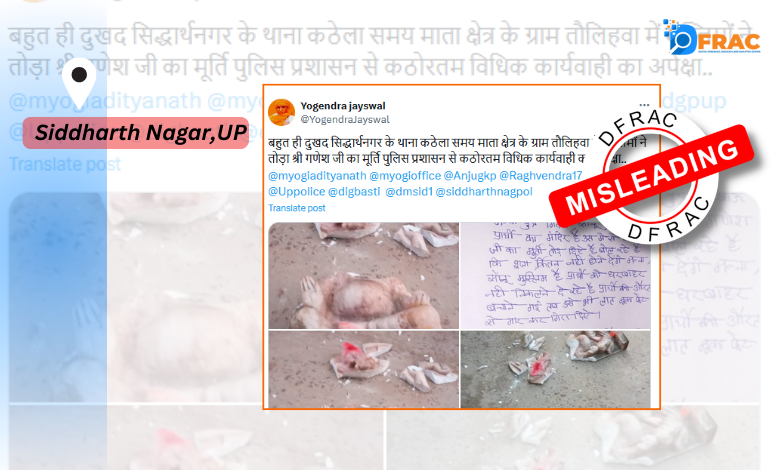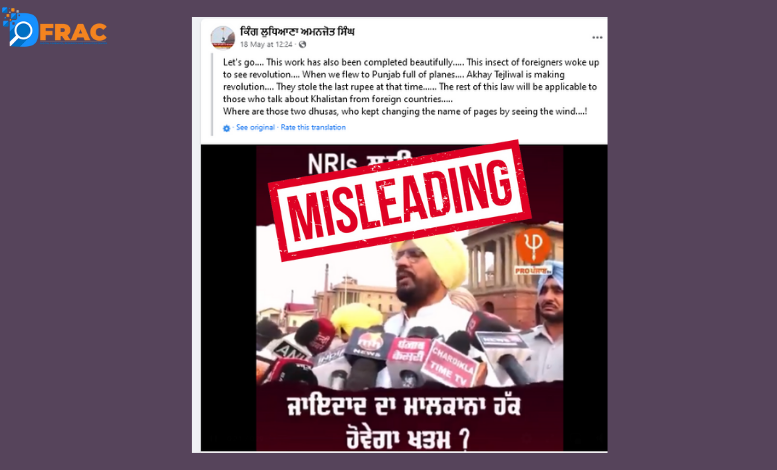Mohd Fahad
Populist leaders want us to believe that news they don’t like or news they want to reject is fake simply because it is critical of them and their policies. The world is littered with such examples. As they are popular, almost cult-like, in their personalities, their fanbase, their voters tend to believe all they say, without arguing or reasoning. The act is not just diminishing empathy among society, but also erasing the space for reasoning in public. Fake, hate and misinformation flows at great speed, thus, creating an effect of popular belief that transforms society into the post truth era.
In 2019, a journalist in Uttar Pradesh’s Mirzapur exposed a government school for feeding his children salt and a chapati in mid-day meal, which was well below the minimum nutritional standards of the government.
Instead of taking action against the school authorities, the Uttar Pradesh government swiftly acted against the journalist for portraying the government in bad light. Using false evidence and conspiracy, the government decided to accuse him of fraud. The Uttar Pradesh government essentially accused them of reporting their version of fake news.
Barely two weeks after the incident, the same state government filed a case against five journalists for trying to report on caste discrimination in Bijnor city. Slandering journalists, when the story doesn’t suit those in power, accusing them of delivering “fake news” has certainly become commonplace around the world.
YouTube and Twitter removed several videos and posts of China’s state propaganda and information war against Hong Kong protests aimed at discrediting news that emerged there in the last few years.
Earlier in 2019, an Indian parliamentary committee led by the ruling Bharatiya Janata Party asked Twitter to explain a “liberal” bias, alleging that they only targeted right-wing voices because they blocked and abusive accounts swept aside.
So when we see politicians and world leaders terming stories like ‘mid-day meal’ as “fake news”, the terminology itself gets discredited. Instead, we face a bigger, deeper threat – what is the real danger of “fake news” – misinformation, propaganda and hate speech perpetrated by the state machinery and co-opted media voices and where is the obvious need for reasoning. After all, salt and chapati is not nutritious .
Lies, rumours, real news separated and put together for the purpose of allaying fear and diverting public attention from accountability – such misinformation designed to deter journalists from doing their jobs. It is set to sow division of hatred among the people as well as generate threat against questioning or reasoning.
News in complex times
In 2018, a series of lynching deaths as a result of rumours about child kidnappers in India forced the Indian public to sit down and watch how we were becoming a part of this “rumour factory”.
These deaths eventually forced the platform, WhatsApp, to restrict our ability to forward messages without a second thought and realization, through recognizable markers that what we get was always an original, fresh piece of information. In 2014, the World Economic Forum named misinformation as one of the ten biggest threats facing society. It sows, waters and reaps the seeds of hatred. Think about these numbers – WhatsApp, which has been accused of spreading rumors and frenzy, has 400 million users in India alone.
Facebook has more than 2.8 billion monthly active users worldwide. How many times are we shocked to read the comments of some of these users at the bottom of the most innocuous posts? Politics, gender rights, festivals, food – just about anything can spark a verbal war about likes and favors.
Digital platforms have brought yellow journalism back to the fore. For one, accuracy and fairness have little to do with the algorithms that make up news feeds and compilations.
Hate as political tool
In India, propaganda is constantly being used to defame political leaders and anti-government political legacies. Photographs of India’s first Prime Minister Jawaharlal Nehru being affectionate and social with female friends, or family; or lighting a cigarette, was shared by the head of the BJP’s IT cell, accusing her of being a feminist with Western values; And in turn rally political support for the current leadership of the BJP, projected as one who upholds/respects “traditional values”.
It’s all profitable – the influx of concocted stories, rearranged half-truths and non-referenced facts have undermined trust in the media. Worse, it co-opted a profitable bottom line in the mainstream media through unscrupulous politicians and media managers.
Hate for political gain
Troll armies – both human and automatic, conduct concerted campaigns – especially against religious or caste minorities and refugees – creating enemies from ordinary people trying to make a living. These campaigns prey on the most basic human emotions – fear and anger. Anger against corruption or unemployment or reservation. For example, anger against real or perceived economic and social privilege.
And fear – the fear of terrorism and threats to the safety of refugees. The goal of propaganda is to divide and polarize society, to make us less tolerant, to believe that another group is worse than us.
The way ahead
As the era of hate speech fades away, the space for civil debate in the public sphere has been created by outrage built up in TV studios for thick, abusive conversations. Electoral contests or policy debates are no longer based on logic but on personal charisma and tribal loyalty. The question we need to ask ourselves is can we put all the blame on technology’s doorstep? If we do so, we open up the possibility of authoritarian governments—and profit-driven companies—to try and regulate our responses. Instead what we can and should do is identify, report, counter each time we see something abusive or hateful. We should motivate the forums to act. We must ensure that governments do not abuse the call for regulation to silence critics.





